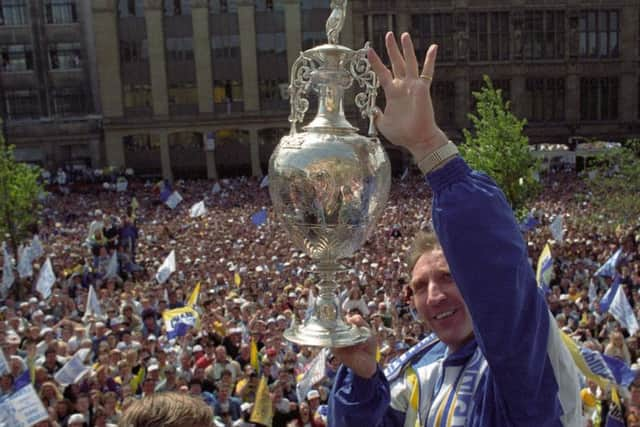My big regret - Howard Wilkinson as he reaches milestone of move to Leeds United from Sheffield Wednesday
The Elland Road club was transformed under Wilkinson’s guidance after he moved up the M1 from Sheffield Wednesday.
Promotion to the top flight at the end of his first full season was followed by the League title just two years later.
Advertisement
Hide AdAdvertisement
Hide AdSuch a record brings huge satisfaction to someone who is still the last English manager to win the championship.


But Wilkinson’s sacking in September, 1996 – just a few months after a takeover by the Caspian Group – remains a source of frustration.
His overhaul of the club’s Academy was about to propel the likes of Harry Kewell, Alan Smith, Jonathan Woodgate, Ian Harte, Paul Robinson and Stephen McPhail into a first team that already boasted regulars Gary Kelly and Lee Bowyer, the latter made Britain’s most expensive teenager when signed by Wilkinson.
“It is not pride that I feel all these years on at what was achieved, but satisfaction,” Wilkinson told The Yorkshire Post. “Funnily enough, though, the older I get the more disappointed I am that we didn’t get the chance to carry on.
Advertisement
Hide AdAdvertisement
Hide Ad“We changed so much during my time, including the youth side and the training ground (Fullerton Park), which was a total s***-hole.
“I remember saying to Leslie (Silver, chairman) at the very beginning, ‘If we are going to do it right and build an institution then you won’t see the real fruits of the youth development for at least 10 years’.
“I look back at the (Champions League) semi-final team (in 2001) and there were seven or eight involved who had come through the Academy.
“There was a fantastic platform there at Leeds United for the next 10 years, but unfortunately it crumbled again.”
Advertisement
Hide AdAdvertisement
Hide AdUnited’s decline since those heady days early in the Millennium when Kewell, Smith et al were strutting their stuff at the San Siro and Bernabeu is well documented.
Less acknowledged is how pivotal an academy that Wilkinson effectively built from scratch proved in keeping United alive amid the financial problems that engulfed the club.
Be it the sales of Smith, Woodgate and James Milner or later big-money departures such as Lewis Cook and Fabian Delph, these products of the Thorp Arch production line brought in vital funds.
“Those who came through just after I left were all different,” said Wilkinson. “All different, but together they were good. Robinson, Harte, Kewell, Kelly, Woodgate, Smithy, McPhail – a really good bunch.
Advertisement
Hide AdAdvertisement
Hide Ad“The year before I came to Leeds they had taken on 18 apprentices and ended up signing one. That is no good.
“Instead you need to get eight or nine in and sign seven. The year I left we signed seven, and what a team they became.
“That had always been part of the planning – to end up with a set-up not unlike Manchester United, with kids who lived on site and who attended a local school.
“We had a terrific environment at Leeds. I can still see ‘Smudger’ (Smith), Woody, all of them as young lads.
Advertisement
Hide AdAdvertisement
Hide Ad“That was my biggest sadness when the takeover happened and they had lined George (Graham) up. I remember sitting next to Leslie (Silver) three years afterwards and we had a good chat. He was sorry at having sold the club.
“There can be no doubt after the championship (in 1992) we slumped. We had got everything out of that team and there was no more to come. But the young lads weren’t far away.”
How it all happened: Page 24.